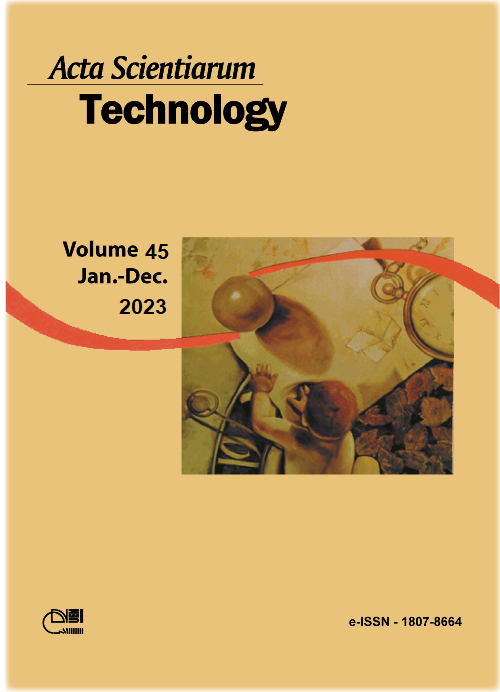Study of the mechanical behavior of asphalt mixtures in terms of creep and Superpave compaction parameters
DOI:
https://doi.org/10.4025/actascitechnol.v45i1.60212Palavras-chave:
permanent deformation; static creep test; gyratory compactor; densification indicesResumo
This was a study on the mechanical behavior of hot asphalt mixtures with regard to permanent deformation, considering static creep tests and the parameters derived from the Superpave compaction curve. For the asphalt mixture production, mineral aggregates and two types of asphalt binder (CAP 50/70 and AMP 60/85) were used. These mixtures were designed using the Superpave methodology and compacted in the content and number of gyrations according to the design. For the design condition, asphalt mixtures using the conventional CAP 50/70 asphalt binder showed better workability and lower deformation than asphalt mixtures with the AMP 60/85 polymer binder. Furthermore, the influence of asphalt binder content on the behavior of asphalt mixtures in relation to permanent deformation and compaction indices was studied, considering the maximum number of gyrations in the design. Regarding this investigation, asphalt mixtures with higher asphalt binder content tend to show higher permanent deformation and better workability. Complementarily, the compaction curve indices (Construction Densification Index, CDI; modified Traffic Densification Index, TDIm and Locking Point, LP) were correlated with parameters obtained from static creep tests (total deformation after the recovery period, Dt; creep modulus, CM and curve inclination, Icurve) through curves obtained by the correlation between these indices. Based on this analysis, a good correlation was found between the results of static creep tests and compaction indices, showing the potential of these indices for predicting the mechanical behavior of the analyzed mixtures in relation to the development of permanent deformations.
Downloads
Referências
Downloads
Publicado
Como Citar
Edição
Seção
Licença
DECLARAÇíO DE ORIGINALIDADE E DIREITOS AUTORAIS
Declaro que o presente artigo é original, não tendo sido submetido í publicação em qualquer outro periódico nacional ou internacional, quer seja em parte ou em sua totalidade.
Os direitos autorais pertencem exclusivamente aos autores. Os direitos de licenciamento utilizados pelo periódico é a licença Creative Commons Attribution 4.0 (CC BY 4.0): são permitidos o compartilhamento (cópia e distribuição do material em qualqer meio ou formato) e adaptação (remix, transformação e criação de material a partir do conteúdo assim licenciado para quaisquer fins, inclusive comerciais.
Recomenda-se a leitura desse link para maiores informações sobre o tema: fornecimento de créditos e referências de forma correta, entre outros detalhes cruciais para uso adequado do material licenciado.



















